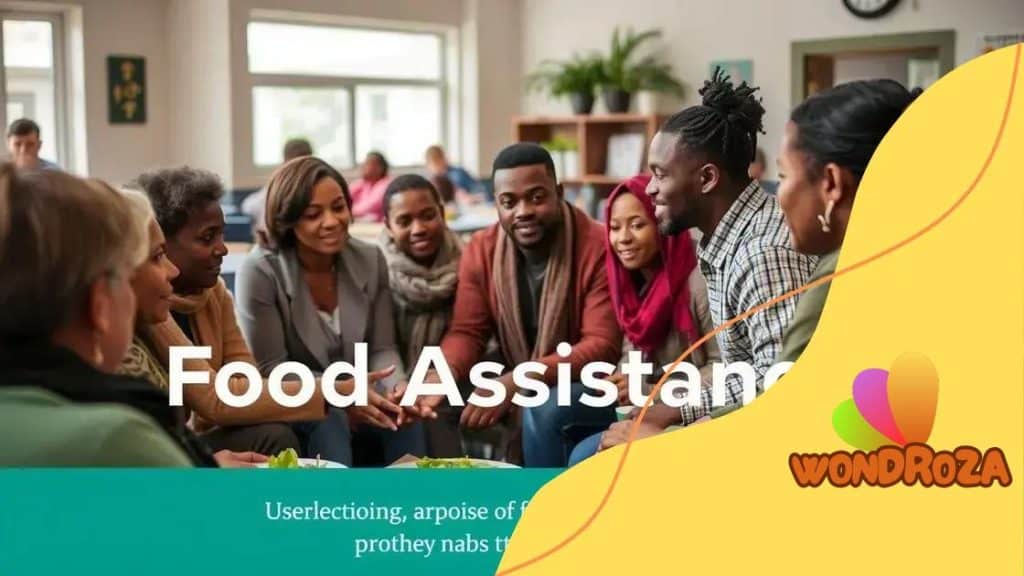How to navigate food assistance eligibility in times of crisis

To navigate food assistance eligibility in times of crisis, gather necessary documents, understand application processes, and connect with local resources for support tailored to your specific needs.
How to navigate food assistance eligibility in times of crisis is a question many face when hardships arise. Knowing where to turn for help can make a significant difference in ensuring access to essential needs. Let’s explore how to effectively find the resources available to you.
Understanding food assistance programs
Understanding food assistance programs can feel overwhelming, but it’s vital to know what’s available. Knowing how these programs work can help you secure the support you need.
What Are Food Assistance Programs?
Food assistance programs are government or community initiatives designed to help individuals and families access nutritious food. They aim to alleviate hunger and enhance food security. Programs vary by location and may include benefits like food stamps, local food pantries, or meal delivery services.
Types of Food Assistance Programs
Here are a few common types of food assistance programs:
- SNAP (Supplemental Nutrition Assistance Program): Provides funds to purchase food at supermarkets and farmers’ markets.
- WIC (Women, Infants, and Children): Supports low-income pregnant women and young children with nutritious food and education.
- Local food banks: Offer free groceries to those in need and help connect people to other services.
Many food assistance programs work in different ways. For example, SNAP benefits are loaded onto an electronic card, which you can use like cash. In contrast, food banks might distribute packages of food directly. Understanding how each program operates helps you make informed decisions about what resources to utilize.
Eligibility for Programs
Eligibility criteria can vary significantly from one program to another. Factors such as household income, family size, and citizenship status are often considered. Make sure to check specific requirements before applying.
Additionally, some programs have a straightforward application process, while others might require more documentation. It’s essential to gather necessary paperwork, such as proof of income or residency, to avoid any delays in receiving assistance.
Despite the challenges, many people have successfully navigated these programs. Sharing experiences and learning from others in the community can ease the process. Connecting with local organizations or support groups can provide you with information, encouragement, and help.
Eligibility criteria for food aid
Eligibility criteria for food aid are essential to understand as they determine who can access these vital resources. Knowing the requirements can help you get assistance when you need it most.
Key Factors for Eligibility
Several key factors influence eligibility for food aid programs. These factors often include income, family size, and household expenses. Household income is typically a primary criterion, as many programs are designed to assist low-income families.
Additionally, government agencies will usually consider how many people are living in your home. This information helps them gauge how much help you may require. Keep in mind that specific requirements can vary between programs.
Income Guidelines
Each food assistance program has its own income guidelines. To qualify for assistance, your household income often must fall below a certain level. Here are examples of common considerations:
- Federal poverty line: Many programs base eligibility on a percentage of the federal poverty line.
- Income sources: Some programs assess total income, including wages, benefits, and other forms of assistance.
- Net versus gross income: Understand whether the program considers your gross income before deductions or your net income after expenses.
It’s important to gather all necessary documentation, such as pay stubs, tax returns, and other income-related information. This preparation can help streamline the application process.
Some programs also look at household expenses, which can impact your eligibility. For example, high housing costs or medical expenses might be taken into consideration in certain programs. Each program’s guidelines will lay out how these factors are considered.
Special Circumstances
In addition to standard eligibility criteria, various special circumstances can affect your ability to qualify for food aid. These may include:
- Disability: Individuals with disabilities may have different eligibility rules.
- Temporary job loss: If you’ve recently lost your job or faced financial setbacks, programs may offer flexibility.
- Children in the household: Households with children might have access to additional resources or expedited services.
Understanding these eligibility criteria can empower you to seek the assistance you need. Don’t hesitate to reach out to local organizations or food banks for help.
Application process for assistance

The application process for assistance can seem complicated, but understanding it can ease your journey. Knowing what to expect is the first step to getting help.
Gather Required Documents
To start your application, it’s important to gather all necessary documents. This includes proof of income, identification, and residency. In many cases, programs might ask for:
- Verification of income: This could include pay stubs, tax returns, or benefit letters.
- Identification: Valid ID such as a driver’s license or state ID is often required.
- Proof of residence: Documents like a utility bill or lease can help confirm where you live.
Having these documents ready can make the application process smoother and quicker.
How to Apply
Once you have your documents, you can begin the application process. Many food assistance programs offer various ways to apply:
- Online applications: Most programs provide an online portal for easy access. This allows you to submit your application from home.
- In-person visits: You can visit local agencies or food banks to apply directly. Personnel there can help guide you through the process.
- Phone applications: Some programs may allow you to apply over the phone, which can be helpful for those who have limited access to the internet.
Choose the method that works best for you and be prepared for follow-up questions.
What to Expect After Applying
After submitting your application, it usually goes through a review process. You might receive a notification about whether you’re approved or if more information is required. It’s important to respond quickly to any requests for additional information to avoid delays.
Some programs have expedited processes for urgent needs, especially during times of crisis. Make sure to inquire about this option if it applies to your situation.
Connecting with local organizations can also provide additional support during the application process. They can offer resources, answer questions, and help you with any difficulties. Understanding these steps will empower you to navigate the application process effectively.
Common challenges and solutions
Common challenges and solutions regarding food assistance can help many people navigate the system effectively. Recognizing potential obstacles is the first step toward overcoming them.
Identifying Common Challenges
Many individuals face similar challenges when seeking food assistance. Some of these challenges include:
- Complex application processes: Understanding forms, eligibility criteria, and documentation can be confusing.
- Stigma: Many individuals feel embarrassed or ashamed to seek help, which can prevent them from applying.
- Limited awareness: Some people simply do not know what resources are available to them.
Addressing these challenges is crucial to ensuring that everyone has access to necessary resources.
Solutions to Overcome Challenges
Fortunately, there are several solutions that can help alleviate these challenges. Utilizing available resources is key. Consider these strategies:
- Seek assistance from local organizations: Community organizations often provide guidance and resources for navigating the application process.
- Participate in workshops: Many food banks and agencies offer workshops to educate individuals on the application process and available programs.
- Connect with support groups: Joining a support group can help individuals share experiences and gain confidence in seeking help.
Additionally, maintaining open communication with agency staff can offer clarity. Don’t hesitate to ask questions or request assistance when needed.
Building awareness about available food assistance programs is also critical. Community outreach initiatives can provide valuable information. Flyers, social media, or community meetings are effective ways to educate others about the resources available.
Resources for additional help
Resources for additional help are crucial for anyone navigating food assistance. Knowing where to turn can make a significant difference in getting the support you need.
National Resources
There are several national organizations that provide assistance and resources. Some of these include:
- Feeding America: This network of food banks helps people in the U.S. find food assistance near them.
- National Hunger Hotline: You can call 1-866-3-HUNGRY for help finding food assistance and other resources.
- USDA: The United States Department of Agriculture offers information about food programs like SNAP and WIC.
These organizations have websites and hotlines where you can learn more about what’s available in your area.
Local Organizations
Local food banks and community organizations also play a vital role. They often offer food assistance programs tailored to specific needs. Many food pantries provide not only food but also health and nutrition education. Check your local community centers or faith-based organizations for these resources.
Additionally, many communities have outreach programs designed to help residents access food assistance. Volunteers often work to inform those in need about available programs and resources.
Online Tools and Applications
Technology has made it easier to locate resources. Several websites and mobile apps can assist you in finding food assistance:
- FoodPantries.org: This site helps you locate nearby food pantries and soup kitchens.
- AmpleHarvest.org: Connects people with local gardens and farms donating fresh food.
- SNAP-Ed: Offers tools to help individuals learn about nutrition and healthy eating while using assistance benefits.
Using these online resources can save you time and help you find exactly what you need. Remember, reaching out for help is a vital step in managing food insecurity.
FAQ – Frequently Asked Questions about Food Assistance Eligibility
What documents do I need to apply for food assistance?
You will typically need proof of income, identification, and residency documents. It’s important to gather these before starting the application.
How long does the application process take?
The application process can vary, but you may receive a decision within a few days or weeks, depending on the program and your local agency.
Can I receive food assistance if I work?
Yes, many food assistance programs are designed to help individuals and families, even if they are employed, as long as their income meets the eligibility criteria.
What should I do if my application is denied?
If your application is denied, you can appeal the decision or seek assistance from local advocacy groups that can help you navigate the process.





